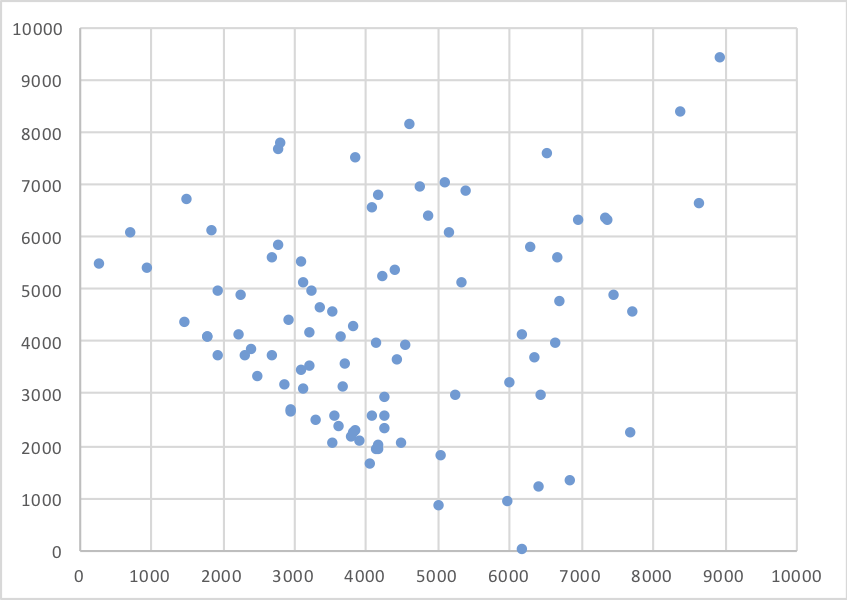Let Emmitt Smith always stand out as the counterexample to the idea that a heavy workload is bad for a player’s future. Smith is the only player in NFL history to record 2,000 carries before the end of his age 26 season (he also has a record 279 postseason carries through his age 26 season). And yet Smith remains the only player in NFL history to pick up 9,000 rushing yards from age 27 through the end of his career.
Yesterday, I looked at the question of when is a player’s career half over. The sample there was all retired players with at least 5,500 career rushing yards and at least 750 rushing yards in their best season. The most common age to be the “midpoint” of a player’s career was his age 26 season. Today, a look at the amount of rushing yards gained by players through their age 26 season (on the X-Axis), and from their age 27 through the rest of their career (on the Y-Axis).
You’ll see three players on the far left of the graph, with a dot to the left of the 1,000-yard mark: Fred Jackson, John Henry Johnson, and Floyd Little all rushed for less than 1,000 rushing yards through age 26, but over 5,000 yards for the rest of their career.
On the other hand, Ray Rice, Larry Brown, and Rodney Hampton all had over 5,000 rushing yards through age 26, but less than 1,000 rushing yards from their age 27 season onwards.
In general, there is not a huge correlation between the two stats: the R^2 was just 0.09. This is certainly the right age cut-off to use: the 94 players in question averaged 4,279 rushing yards through age 26, and 4,248 rushing yards from age 27 through the rest of their career.
The table below shows all 94 players, with their rushing yards both before and after their age 27 season.

